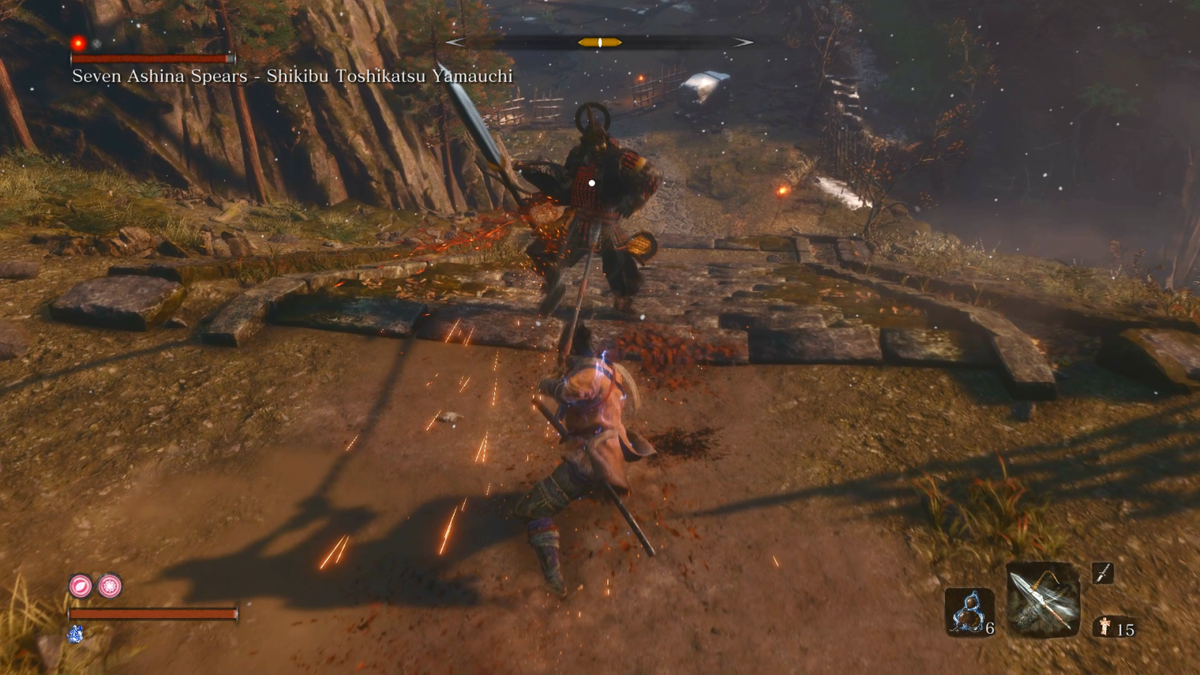
Ever since it was announced, Sekiro: Shadows Die Twice has been the subject of rampant speculation. Some people were worried that it would be too much like Dark Souls and Bloodborne, others that it would be too different. Seemingly every scant detail was analyzed, picked apart, and held up as an example of why Sekiro was destined to become either a modern classic or a garbage fire, depending on who you asked. It may be impossible for Sekiro to fully get out from under the long shadow cast by the Soulsborne games and the sub-genre they launched, but Sekiro deserves to stand on its own. It’s not a Soulsborne game, but it’s a From Software game through and through, and an excellent one at that.
Discovery is one of the central aspects of any From Software game. Perhaps even more than their much-discussed difficulty, the slow unraveling of both how the game works and what it’s about is one thing that From Software does better than any other developer. Sekiro is much more approachable in terms of how much it tells you up front, but it’s still best to go into the game knowing as little about it as possible. I’m going to avoid any explicit story spoilers, but be warned that I might discuss some things you’d rather find out for yourself.
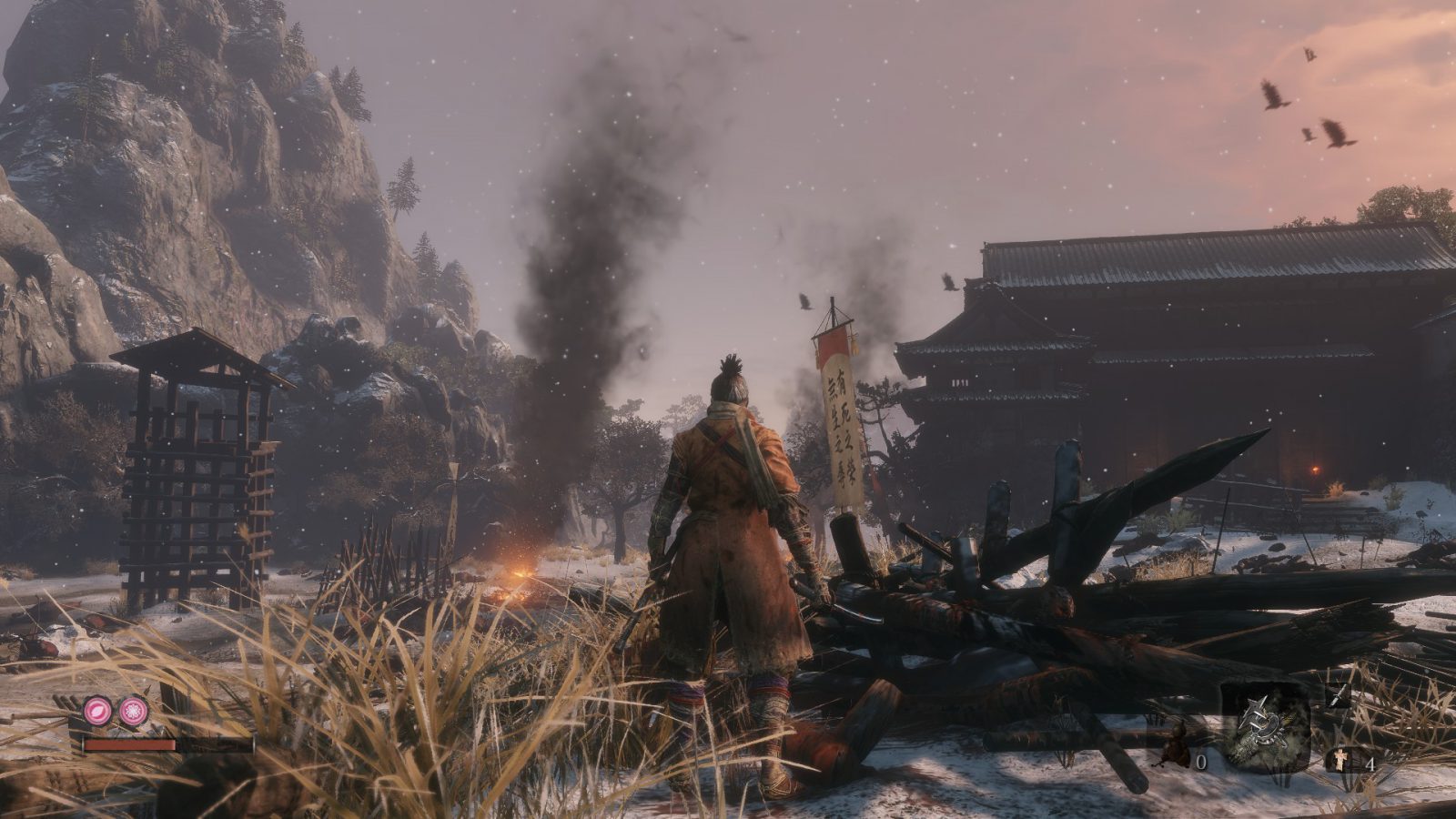
The shadow of war surrounds Sekiro. It takes place mainly in and around the territory of the Ashina clan during Japan’s conflict-ridden Sengoku period. Or at least, a version of that time fictionalized enough to allow immortal monks, King Kong-sized apes, and all sorts of magic alongside its period-accurate architecture. Its titular main character is a shinobi trying to rescue his young master Kuro, known as the Divine Heir, from Genichiro Ashina. Kuro, as his name might suggest, appears to have powers that are literally god-given, imbuing anyone he chooses with the power to rise from the dead. As you might imagine, that makes plenty of people more than happy to take over Sekiro’s babysitting duties. The story spirals out from there, with Sekiro assaulting the castle where Kuro is being held, and eventually setting out into more exotic and inhospitable locales.
Sekiro is tremendously well equipped for his task, with a prosthetic arm loaded with weapons, lightning-fast reflexes, and of course, the power to return from the dead. Combat in Sekiro is based around a system called posture. Attacking enemies or perfectly deflecting their attacks drains their posture, which sets them up for a deathblow, while taking damage or mistiming deflections depletes your posture, momentarily stunning you. Bosses and mini-bosses usually take more than one deathblow to defeat, and their posture is much harder to whittle down in the first place. You can take a look at Sekiro’s combat in our preview video, as it makes a lot more sense in motion than in words. Even then, watching the game and playing it are two vastly different experiences. The flow state of a difficult battle and the knowledge of just how many ways you have to approach any opponent make every fight a thrilling confrontation with dozens of possible strategies. When you’re killed, you have the ability to resurrect and try a better tactic. You get one use of this ability every time you rest at one of the idols scattered around the world, which also serve as fast travel points and stations to upgrade your stats, and you can gain additional uses by executing enemies.

There’s a more traditional plot structure in Sekiro in than previous From Software games, which is to say, any at all, but that doesn’t mean you’re just following the story beat for beat. For one thing, you have a remarkable amount of freedom in how you progress through the game. There are certain choke points where you have to finish one story beat in order to start the next one, but after the first couple of hours, there was almost never a time when I didn’t have at least two or three choices of where to go next. You can also explore the side stories of various NPCs you meet and even make some important decisions about the main story.
Sekiro is much more grounded in reality than any of the Soulsborne games, and as a result, it has less variety in its levels. Expect to spend more time in mountain temples and less in crystal caverns. There are a few excursions to more fantastical environments, but those levels tended to be disappointingly short and not all that different from more mundane areas. The levels themselves are well designed and full of alternate routes, but they’re not quite as memorable as those in Dark Souls or Bloodborne. One signature feature of the original Dark Souls is how its levels twisted around one another, entwining some of the earliest and latest areas in the game. Sekiro doesn’t stick to the same trick, instead trying some of its own. You can progress through most levels in a pretty clear, linear way, but they’re also full of side paths, shortcuts, and secret passages to discover. Traversal is the most fun it’s ever been in a From Software game, thanks to your grappling hook, which lets you quickly dart through levels or get the jump on your enemies. It’s hard to overstate just how big of a deal this change is. Rather than being funneled through dark corridors, you’re given both the blessing and curse of having to make your own way through. Most levels are extremely vertical in design, and you’ll always want to be on the lookout for a better path to where you’re heading. Sekiro also has you return to some locations multiple times, but in a way that’s genuinely exciting rather than tedious.
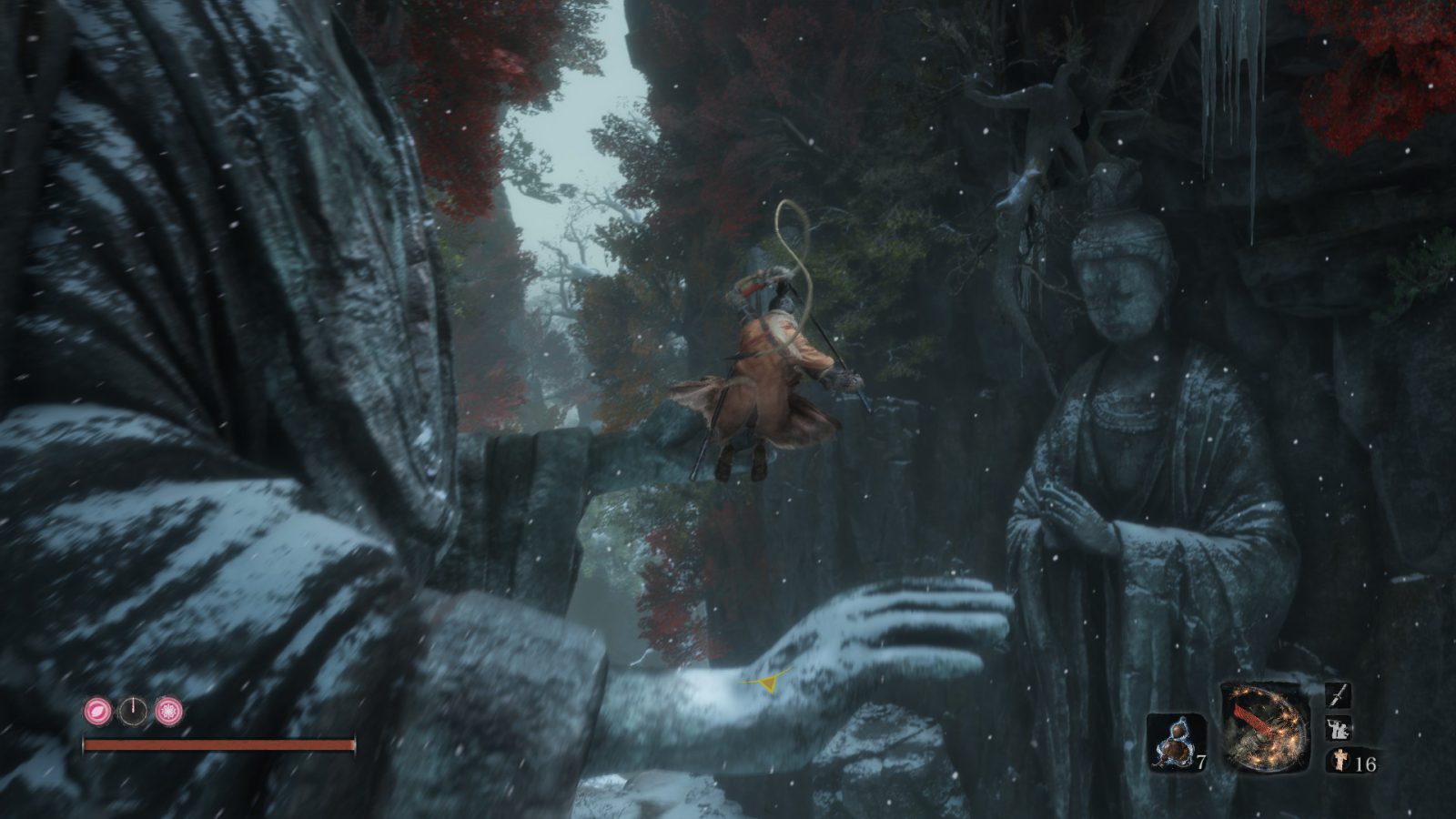
Spread throughout these levels are plenty of treasures just out of reach and mini-bosses ready to wipe the floor with the unprepared. When I was at a loss for how to proceed through an area or felt unable to beat an opponent, I could almost always make progress somewhere else to cool down or plot my next move. I was shocked to find how often, when faced with an enemy that I thought I might be completely incapable of beating, I discovered a tool, item, or technique in another area that got me through it. There was so much going on in so many far-flung places that I had to start keeping notes on paths I hadn’t taken yet just so that I could remember them all.
There’s a lot of optional content in Sekiro, mostly tied to NPC quests. Merchants and other friendly (or at least not hostile) people you meet throughout the game will often ask you for help, and lending a hand can net you valuable items and reveal more about the world. These aren’t the obfuscated, finicky NPC quests you might be familiar with from Soulsborne, where progress is tied to countless invisibles triggers, but it’ll still take some detective work, and probably multiple playthroughs, to finish them all. I already have a running list of things I want to tackle in my next playthrough, when I can move at a slower pace and shine a light in the game’s darker corners. I’ve started quests that I haven’t finished and glimpsed areas that I can’t quite figure out how to reach; I have items in my inventory that I know would be important if I could only figure out how to use them, and I know of a few mini-bosses that I have a score to settle with next time.
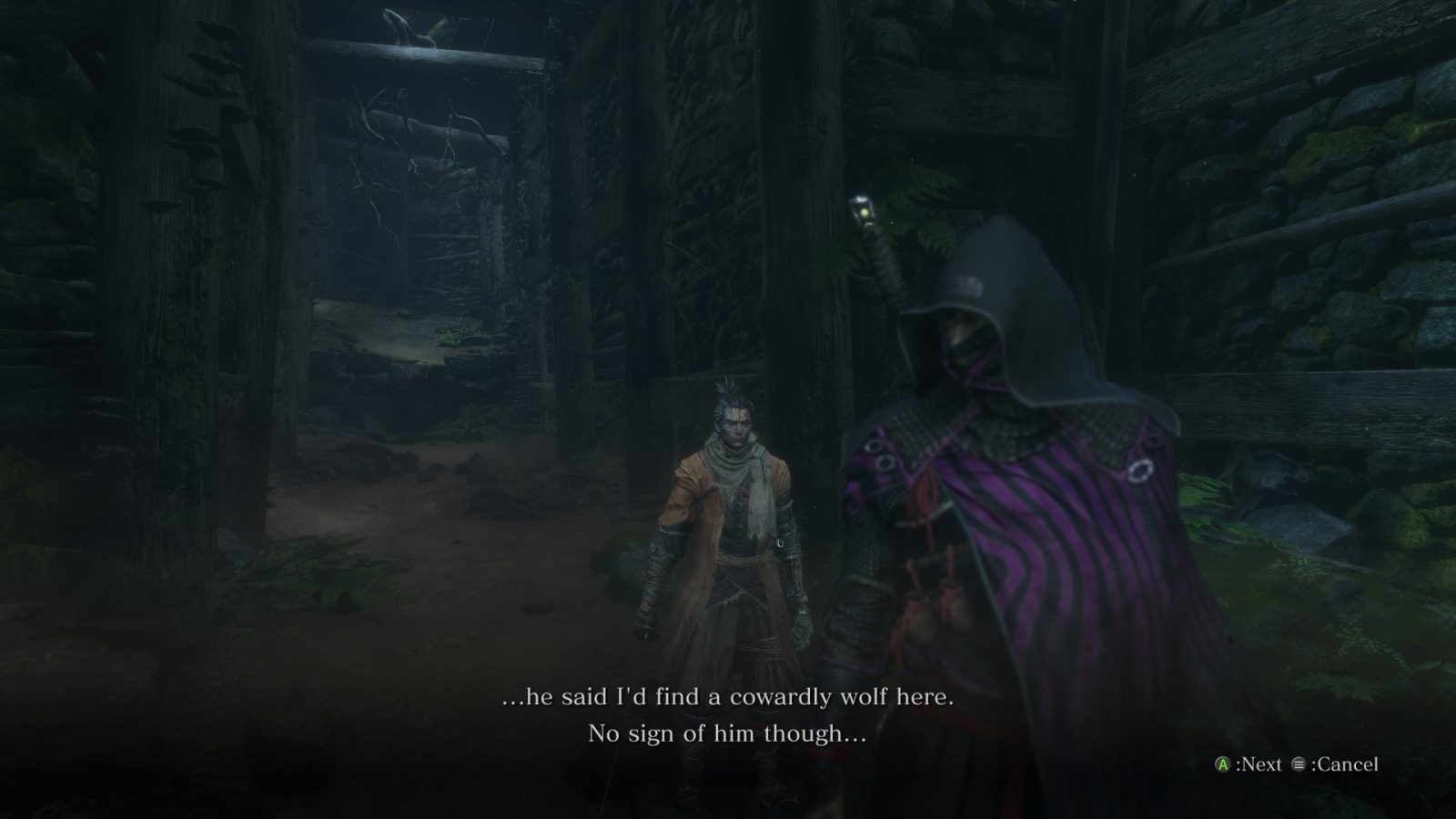
The Soulsborne cycle of frustration (“I hate this unfair bullshit boss”) and elation (“I am an unstoppable katana god”) is in full effect here. Probably because I had already played the first few hours of Sekiro at a preview event, I found the opening levels surprisingly easy to break through. In those opening hours, I started to get the sense that I had actually figured the game out and was ready to face whatever it had to throw at me. I was mistaken. Sekiro seems to have an unlimited capacity for challenge, and its combat system forces you to be relentless and keep yourself on the very edge of a fatal mistake.
Very few of Sekiro’s bosses embody the “big monster that hits hard” archetype that so many Soulsborne bosses did. Instead, most are roughly human-shaped, and taking them down relies much more on quick reflexes and clever strategy than on stamina and the ability to get out of the way. Still, some branch out in some truly unpredictable directions. When you’re used to clashing swords with samurai, it’s quite a shock the first time you find yourself locked in an arena with a supernatural abomination that looks ripped straight out of Lordran. Most boss fights take place in multiple stages, as each time you land a deathblow, they’ll switch up their fighting style. You can never get too comfortable with your strategy, even when your foe is at the brink of death. I’ve seen bosses use new moves on my 10th time fighting them and change their patterns as soon as I had memorized them. Even in the most controller-crushingly difficult encounters, I always came around to appreciating their design — usually after I’d beaten them and worked out my frustration. Bosses are as much about your mechanical skill as they are about your ability to find and exploit their weaknesses.
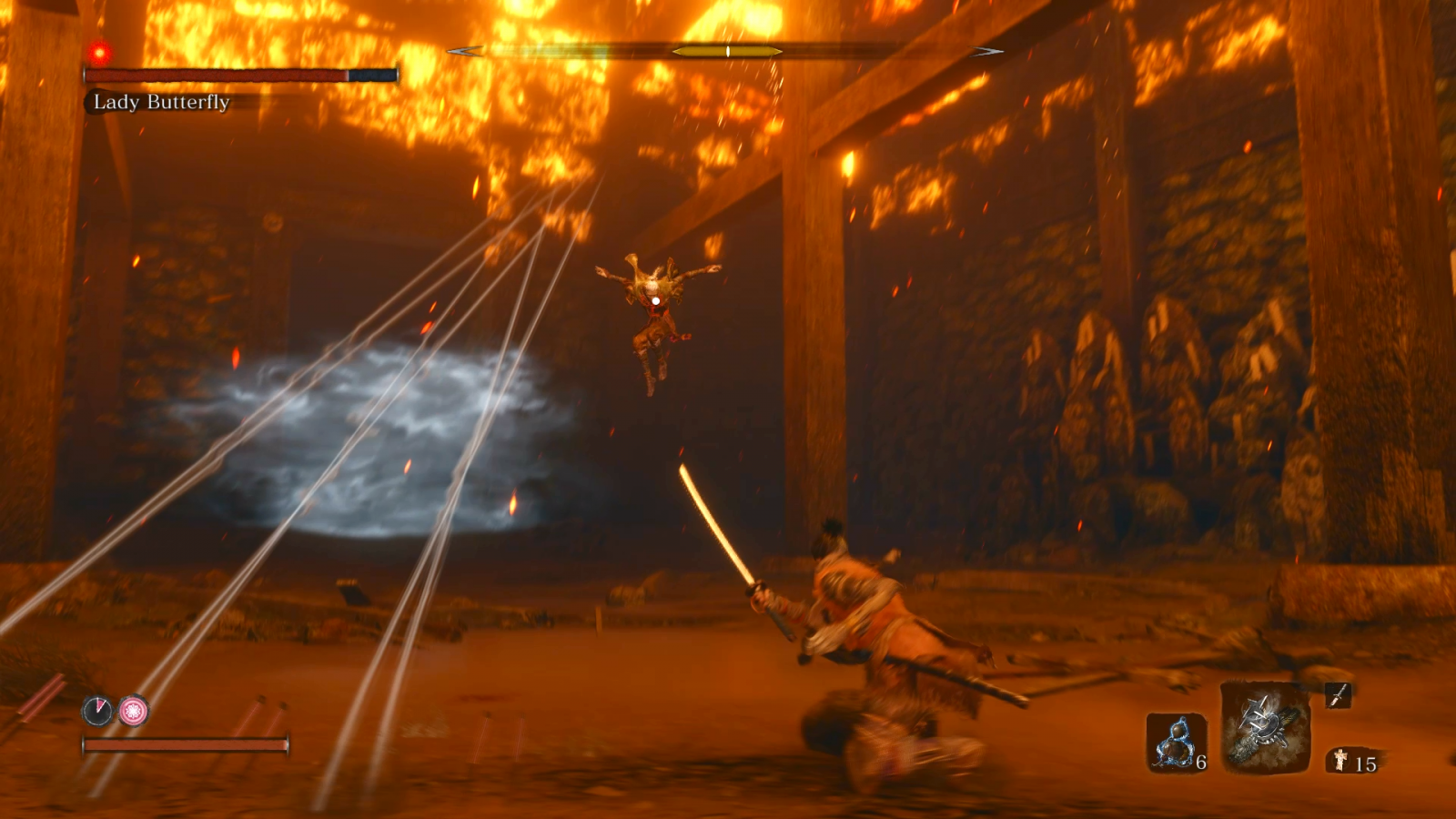
You’ll never replace the katana you start the game with, but between your prosthetic tools and unlockable skills, you can radically alter how you play any time you want, even in the middle of combat. Choosing when to use a spear that can pull enemies close, a rapid flurry attack, or powerful overhead slash can be the difference between life and death — or rather, can decide who lives and who dies. When just hacking away at enemies isn’t doing the trick, you can try fire or poison, grapple away to recover, hide and thin the herd through stealth, or try any number of other unorthodox strategies. And you’ll need to use every one of them. When I say that some of its challenges seem insurmountable, I mean that I sometimes couldn’t even figure out how to overcome them, let alone actually try it.
Sekiro has its share of weaklings who you can dispatch with a few quick slashes, but even they’ll surprise you now and again with a perfect parry or some dirty trick. There are some enemies that I did my best to avoid outright every time I saw them. That’s a surprisingly common option in Sekiro. If a fight isn’t going your way, there’s more often than not a way to duck out of it, either to just blow past it or to re-establish stealth and kill your opponent from the shadows. Sekiro is a stealth action game. It gives both halves of that genre equal share, and if you neglect either one, you’re going to have a rough time. If an enemy — even a mini-boss — is giving you trouble, there’s often a better way to approach to get the drop on it. And if you screw that up and find yourself clashing swords, raw skill and smart item use will get you out of jams that you wouldn’t believe. Going from Dark Souls to Bloodborne is turning from prey to predator, and Sekiro takes that transformation even further, making you an armed-to-the-teeth master assassin. I was trained by Soulsborne games to be patient and wait for an opening to attack; in Sekiro, you have to make your own openings by being aggressive and slipping through your opponent’s guard.

Sekiro gives you plenty of ways to upgrade your character. Each of your prosthetic tools can be upgraded in some interesting ways that can actually alter how they function rather than just increasing their damage. You might give your firecrackers a longer fuse, for instance, or switch your spear thrust to a cleaving attack. Rather than leveling up your stats like in a Soulsborne game, you purchase skills with experience and increase your health, posture, and attack power by using items you find scattered in hard-to-find places and by defeating bosses. It’s up to you whether you do any of these things. You could choose to just stick with your starting stats if you want to increase the challenge. On top of that, there are two separate in-game ways of essentially unlocking hard mode, if you can find them.
Like a lot of people, Dark Souls means more to me than any other game ever has and probably ever will. It’s a transcendent, quasi-religious experience if you approach it with a certain mindset. While I didn’t feel quite the sense of awe from Sekiro that I did the first time I played Dark Souls, that’s not a knock against it. What FromSoft accomplished with Dark Souls was extraordinary, and there’s a reason we don’t hold every game up to that standard. Sekiro is trying something entirely different, and it’s an almost unmitigated success. Partly because of its grounding in reality, its more familiar gameplay and story, Sekiro has an enormous capacity for surprise. I wasn’t moved by Sekiro as much as I was by Dark Souls, but I was shocked and frightened as the world that I thought I was moving through started changing into something else.
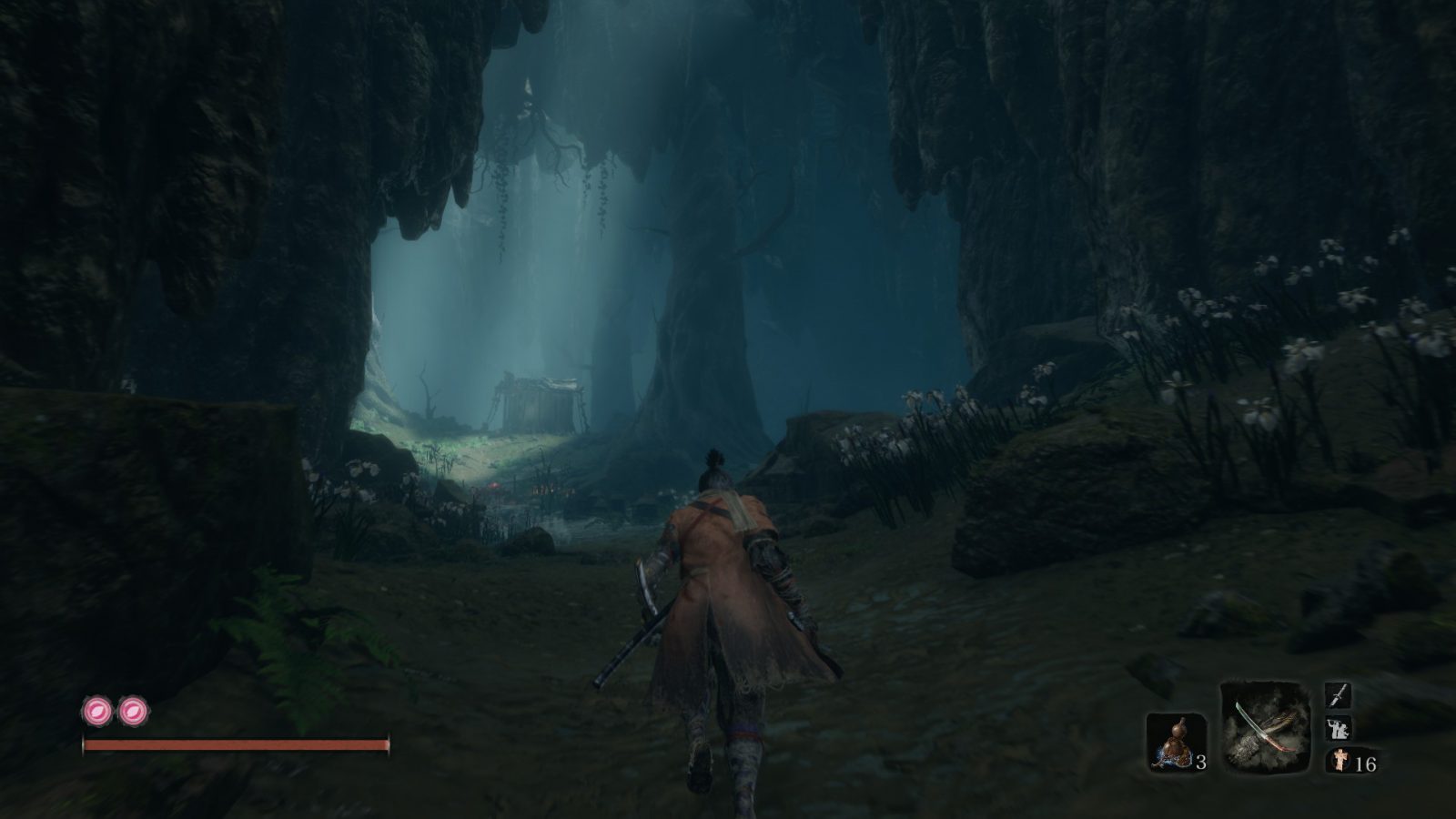
Soulsborne lore is focused on the history and metaphysics of the world. Sekiro instead tells a story about specific characters in its world. Rather than functioning largely as a metaphor, as the Soulsborne games do, it’s a much more literal, human tale. Sekiro touches on loyalty and what it means to swear an oath, on the fear of death and what we might be willing to sacrifice to escape it. Like other FromSoft games, there are stories and legends hidden in item descriptions and inferred from vague lines of dialogue, but here they color the world rather than define it.
A lot of the FromSoft fanbase was vocally worried that Activision’s involvement would turn Sekiro into a more conventional game. The fear of an easier, more casual game turns out to be unfounded, but in other ways, they were right. One way that Activision made its presence felt was through tutorials. For the most part, their inclusion was pretty neutral. I wish that there was an option to turn them off, but they didn’t really detract from the experience. There are some points though, where, rather than explain the basics of the game, they revealed things that I thought would be more fun to discover on my own. So much of what’s good about FromSoft game comes from their mystique, and so much of why they’re beloved is because figuring them out for yourself is so satisfying. This issue came up just a handful of times, and it’s certainly not enough to dull Sekiro’s shine; it’s just a small dent in the armor.

Since we’re in nitpick territory now, there were a few issues that kept the game merely incredible rather than perfect. Maybe one time out of 20, the prompt to perform a deathblow would flick on and off when it appeared, causing me to miss the attack. It felt like a big deal when it happened at a crucial moment in battle, but it was rare enough to be a slight annoyance rather than a real problem. I also had some camera problems in confined spaces, where Sekiro would disappear from sight entirely when backed into a corner, leaving me to guess the right time to deflect based just on an awkward angle of whatever I was fighting. Again, rare, but aggravating.
Sekiro is by no means a perfect game, and it’s sure to raise the ire of some players who were hoping for Dark Souls with ninjas. It’s a risky game for From Software, but in some ways it doesn’t feel risky enough. I wish that there were more variety in enemies and locations, even though what is there is mostly fantastic. The most telling thing for me is that my quibbles with the game only came up when I was thinking about it after playing. When I was in the moment, zipping through the air like some kind of sword-wielding Sengoku-era Spiderman, ducking in and out of cover while winging shuriken at armored spearmen, it felt like the Tenchu/Bloodborne crossover of my dreams. Maybe the best thing I can say about Sekiro is that I’ve already started my second playthrough and I’m excited to do it all over again. As much as I love Dark Souls, playing it can be exhausting; Sekiro is always exhilarating. I’m excited to go back and see what I missed, and maybe even more excited to follow the conversation as the cottage industry that’s sprung out of From Software fandom breaks it down to the atomic level and reveals the secrets hiding in its every corner. If your experience is anything like mine, Sekiro is the kind of game that will keep you up until 3 o’clock in the morning for days on end and still leave you feeling like you’ve just scratched the surface.
Sekiro: Shadows Die Twice
Excellent
Sekiro: Shadows Die Twice manages to live up to its monstrously high expectations in nearly every way. Its high-risk combat system is as satisfying as it is punishing, and its level design begs you to explore every inch of the world. While its locations and enemies aren’t as varied as in previous From Software games, you’ll hardly notice when you’re locking swords with opponents across several beautiful settings. Sekiro tells an intriguing tale about loyalty and mortality packed with surprises and easy-to-miss side stories.
Pros
- Deep, rewarding combat system
- Tons of flexibility in how you navigate and approach enemies
- Optional quests and hidden content galore
Cons
- Enemies and locations could be more varied
- Occasional camera and control problems
